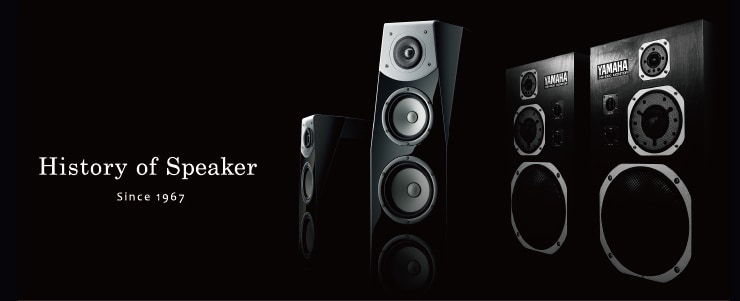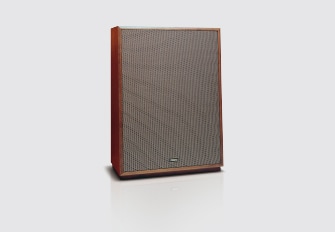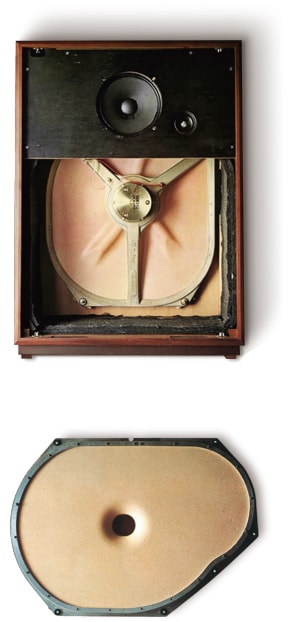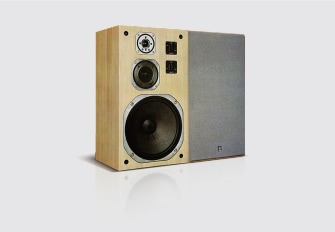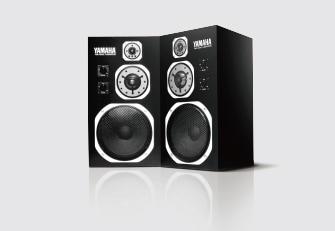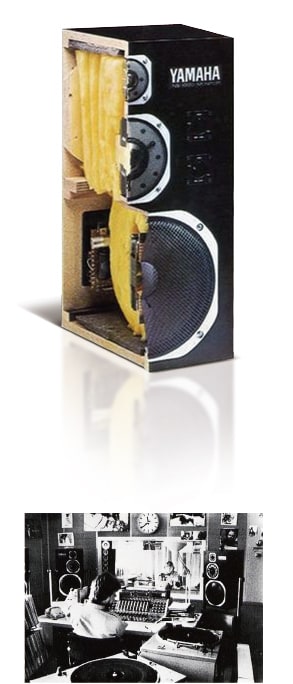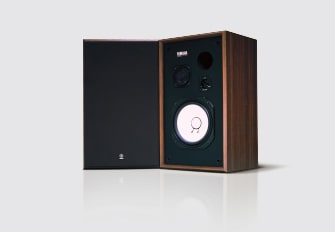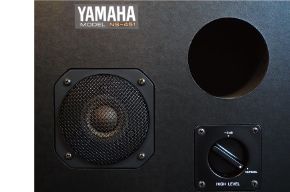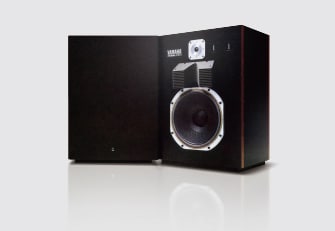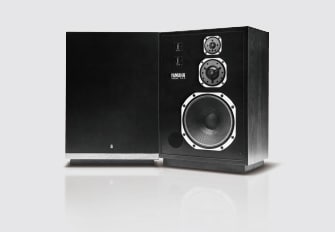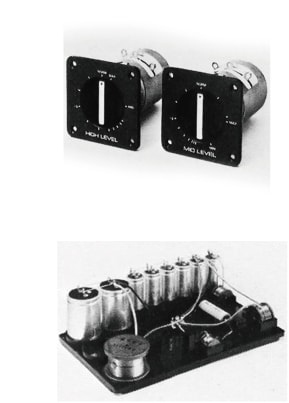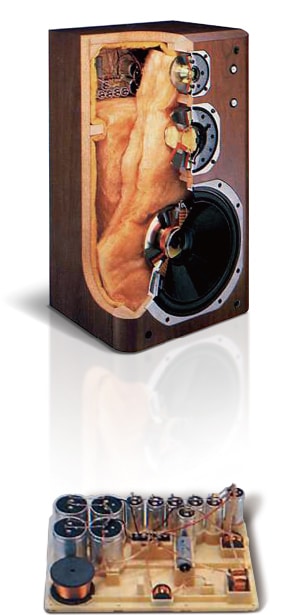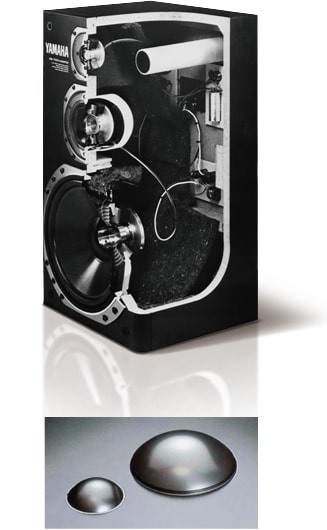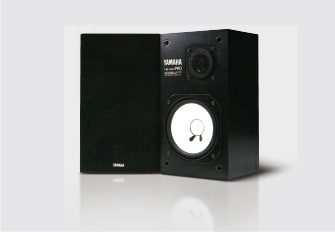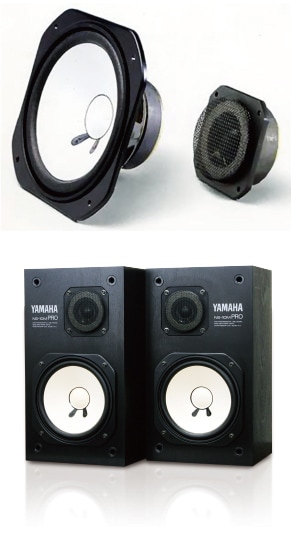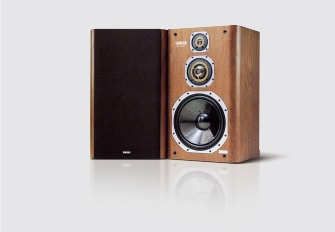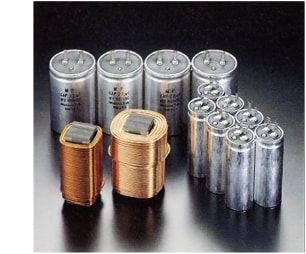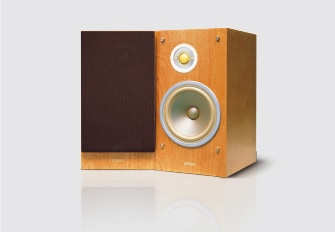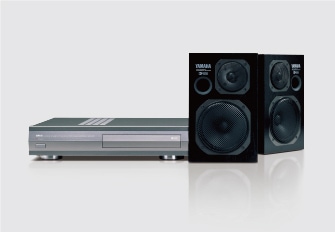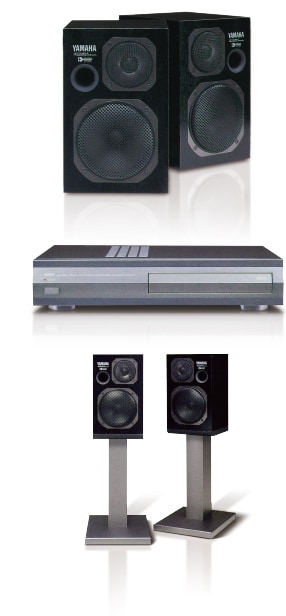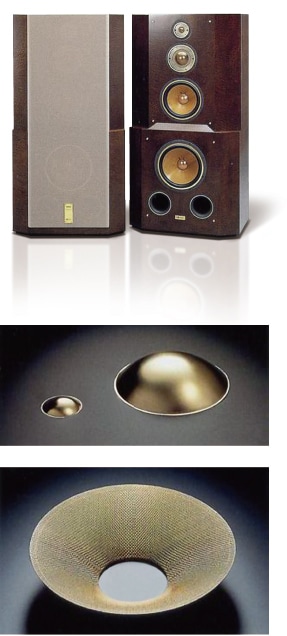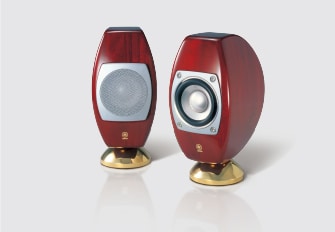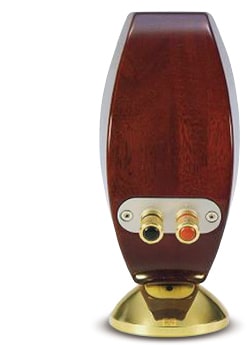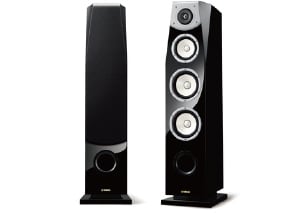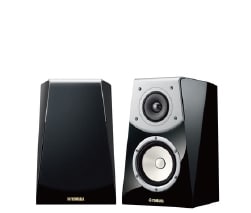Released in 1967, the NS-20 and NS-30 were Yamaha’s historic first Natural Sound speakers. Both featured an irregular three-way configuration based on the JA-6002 (an 89x63cm diaphragm used in the NS-30) and JA-5002 (the 68x50cm version used in the NS-20) units originally developed by Yamaha for the Electone and improved for HiFi audio use. Each was configured the same way apart from the size of the unit and cabinet. The cabinet sizes were determined based on the large dimensions of the NS-30’s JA-6002 unit and the NS-20’s JA-5002 unit, their single-unit measurements of 1030mm high x 740mm wide x 315mm deep and 860mm high x 620mm wide x 310mm deep being standard for the large studio monitors of the time. To put it simply, the NS-30 had a baffle size comparable to the JBL4343 and the NS-20 had a baffle size comparable to the Diatone 2S-305. With a unique Styrofoam diaphragm, this unit bore the name Natural Sound Speaker (NS Speaker) and was the origin of the "natural sound" slogan Yamaha has continued to use ever since.
The front of the NS speaker mounted fully on the rear side of the cabinet (the back of the unit) was also substantially open state, full range driven, and by mounting the two-way consisting of a 30cm (NS-30) or 20cm (NS-20) "squawker" and 5cm tweeter on the front side it had the configuration of a sound field type speaker, actively taking advantage of the effects of reflected sound. For that reason, to borrow a phrase from the documentation of the day, like an upright piano it was recommended that the NS speaker be placed away from the wall behind it. Interestingly, the documentation of the time used different values for a recommended distance from the wall, the domestic Japanese documentation suggesting "5 to 10cm" and the overseas documentation "6 inches" (around 15cm). From this we can guess that there was a business judgment at the time that 15cm would be a tough sell for small Japanese rooms. Actual sales in North America and elsewhere achieved a respectable level, but it faced difficulty in the domestic market due to its size and installation requirements.
Creating a major sensation for their all-time originality, the NS speaker lineup later expanded to include the smaller JA-5004 (58x46cm diaphragm), JA-3501 (51x38cm) and JA-3502 (45x32cm) units along with a modular stereo set and wall mountable compact speakers. For five years it served as the face of Yamaha speakers until the 1973 release of the NS-570, which became the recommended speaker for the first run of Yamaha HiFi components, the 700 series. After 1974, the NS-600 and NS-1000M series of general use round speakers were big hits and the NS speaker disappeared from the product lineup, but the idea of considering room acoustics in playback like a musical instrument manufacturer soon led to the creation of the world’s first Digital Sound Field Processor, the DSP-1, in 1986 and on to a home theater product series.

